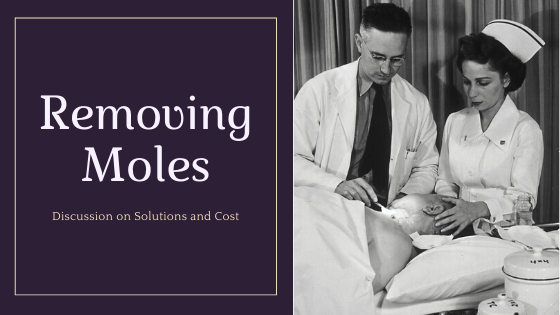Different Types of Moles
Moles, AKA nevus, are created when melanin-forming skin cells are clustered in one area instead of being spread out. These are usually non-cancerous and can come in different sizes, colors, and textures. Many solutions for removing moles exist, but first we have to understand the different types of moles. Moles come in the following three main types.
Nearly everyone has moles. They can be found almost anywhere on the body, including the head, under nails and webbing between fingers and toes.
Congenital Mole
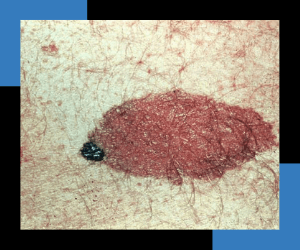
These are moles that are present at birth. They can be large, such as certain birthmarks, or barely noticeable.
Atypical Mole
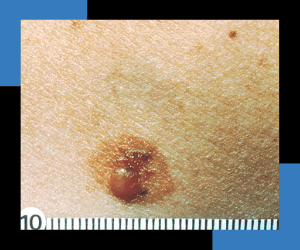
Also known as dysplastic nevus, they always include more than one color. They are larger than a pencil eraser, and have an atypical shape to them. They can sometimes appear similar to a melanoma.
Common Mole
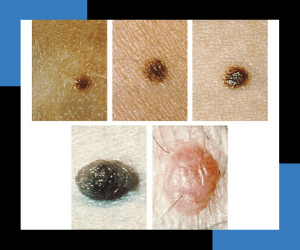
The majority of all nevus are common moles. These appear over time, and most people have a few dozen. Having an inordinately large number can lead to a potentially higher risk of developing melanoma.
Should You Use Home Removal Methods?
There are dozens of online suggestions and videos for removing moles at home. However, many home remedies such as applying iodine or mixing baking soda and castor oil are not as effective as they seem.
A study conducted by the Department of Dermatology at Harvard Medical School reported: “a case of keloid development following the application” of over the counter creams for removing moles. (1) Some other unsafe remedies include, but are not limited to, cutting and burning the area away. This can cause infection to set in and scar tissue to develop.
Home remedies are also unpredictable because there is no way to know if the growth is a melanoma or not. If it is cancerous and it goes undiagnosed, then cancer could potentially spread through your body. This is why it is important to at least get your moles identified before attempting any form of home remedy. A doctor will also be able to recommend creams that are safer to use and less likely to cause keloids. You may also consult with your doctor about using other at-home remedies such as lasers like the Tommy Timmy Smoother Skin Laser. (2)
Characteristics Of A Mole: When To Consult A Professional
Moles are incredibly common so it can be easy to dismiss them as just another part of your skin’s makeup. When in doubt, have your doctor take a biopsy to check for melanoma. If you are not sure what to look for, then take a look at the list below where we have listed comparisons between characteristics of typical moles and potential melanomas.
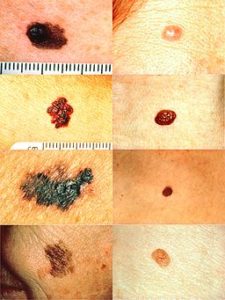
Color and Texture
The color of your mole is important in determining if it is likely to be a melanoma. Most common moles are harmless and come in various shades of browns and are relatively smooth to the touch. If you notice a mole that is red or pink with a rough or bumpy texture, then you may want to consult with a doctor or professional skin care technician.
Size and Shape
Most harmless moles are the size of a pencil eraser or smaller. They have a distinct circular or oval shape to them. Potentially harmful moles are generally larger and come in various asymmetrical shapes that have ragged edges. If you have a mole that suddenly begins to grow or change shape then you should have it checked out immediately.
Location
You should always be more mindful of moles located in areas that are statistically likely to develop cancer, such as the breast, under your hairline, or on your bottom. If you do have a brightly colored, textured mole in one of these areas, then it is important that you get it seen by a professional to have them determine if it is cancerous or not.
Cost And Insurance Coverage
There are several factors to consider when determining both the cost of removing a mole and whether or not your insurance plan covers it. If a mole is determined to be cancerous after a biopsy, then it may need to be surgically removed, which can increase the cost substantially. It is always best in cases like this to reach out to your insurance provider to find out precisely what your plan does and does not cover.
Unfortunately, the majority of moles are not covered under most typical insurance plans and are considered an elective cosmetic procedure. You will want to consult with your doctor before going to a specialist or planning to have a procedure performed so that you can get a better determination of what the cost will be based on the size and location of your mole.
The cost for removing moles vary widely because it is based on the method and reasons for wanting a mole removed.
For instance, a cosmetic removal will not require a biopsy whereas a medical removal will. There is also the cost of whether a medical specialist removed the mole or a beautician.
rices can range from as little as $50 per single mole to a few hundred dollars.
What to Expect When You Get a Mole Removed
There are the at-home remedies that you can try for removing moles with the advice of certified professionals, and they usually involve some form of a cream that is applied directly to the mole. There are also skin care treatment centers that you can be referred to by your doctor if you choose to have a procedure done by a dermatologist to remove the mole.
The actual removal process will involve one of the following options, which will take place after the area has been numbed.
Shave biopsy
The mole and area around it are shaved off using a blade.
Punch biopsy
A punching tool is placed over the mole, and the entire area is ‘punched’ out.
Scalpel removal
The entire mole and surrounding area is excised with a scalpel and then stitched together to assist with healing.
The process of removing a mole is quick, easy, and almost painless if done by a dermatologist. If there is a scar, it is usually quite small. Afterward, a sample will be studied, and if it had cancer cells, then your doctor will be able to help you determine the next steps to take.

